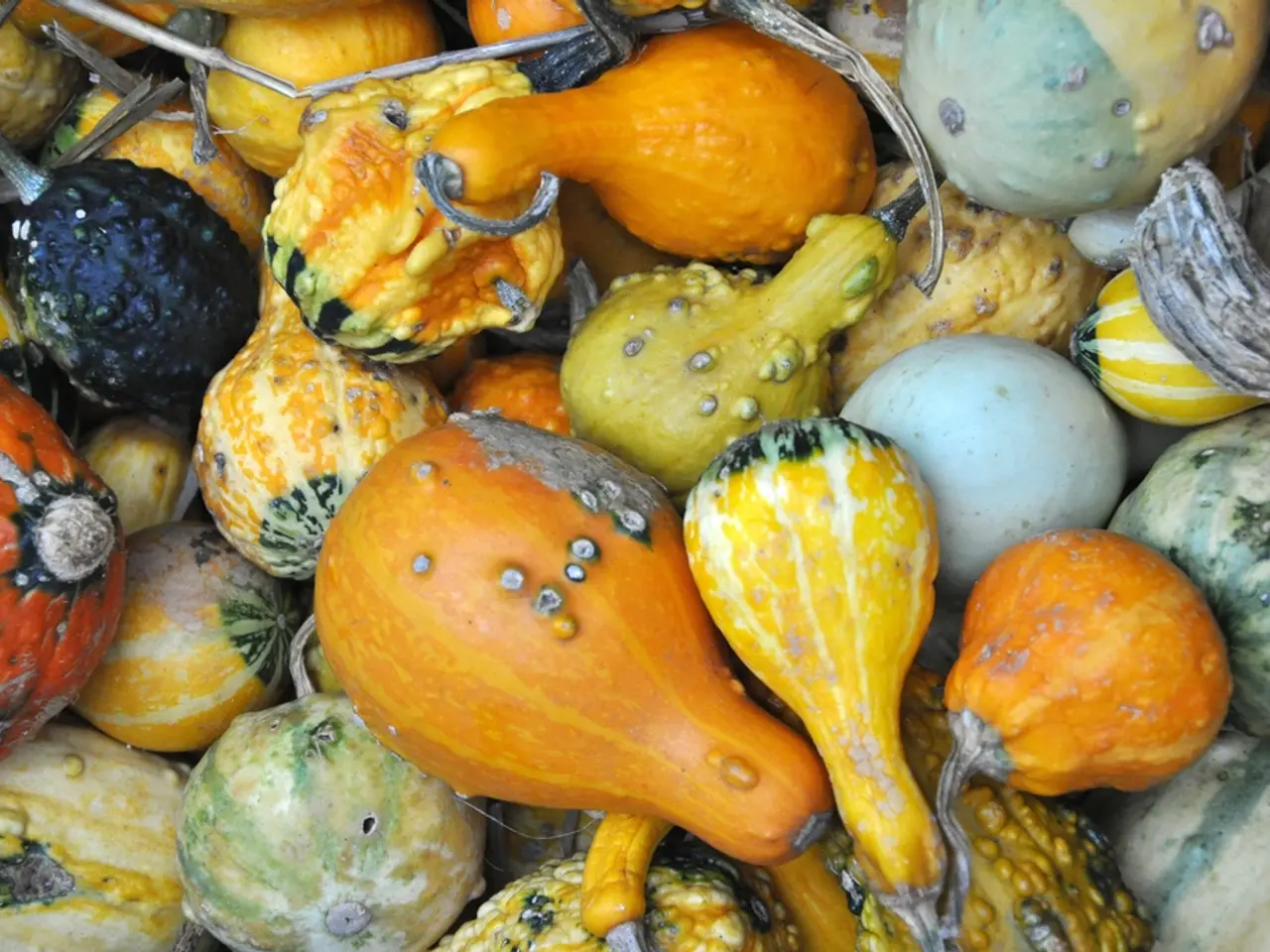Low-Carb Vegetables and Fruits High in Fiber but Low in Carbs - Tomatoes Included
In the quest for a healthy and balanced diet, particularly for those following a low-carb or ketogenic plan, understanding the carbohydrate content of various fruits and vegetables is essential. Here is a guide to some low-carb options, focusing on common serving sizes and net carb counts.
### Low-Carb Fruits
Raspberries, blackberries, and strawberries are the fruits with the lowest carb content, making them ideal choices for a low-carb diet. A half-cup serving of raspberries contains approximately 3g net carbs, while blackberries and strawberries have around 4g and 6g net carbs per half-cup, respectively. Other fruits with moderate carb content include plums, clementines, kiwi, cherries, blueberries, and cantaloupe, with net carb counts ranging from 7g to 11g per typical serving.
### Low-Carb Vegetables
When it comes to vegetables, spinach, zucchini, cucumbers, lettuce, cabbage, asparagus, kale, celery, and mushrooms are all low in carbs and can be consumed relatively freely on a strict low-carb or ketogenic diet. Bell peppers, Brussels sprouts, and green beans have a slightly higher carb content, so portion control is important.
### Carbohydrate Content in Tomato Varieties
Tomatoes, while technically a fruit, are often treated as vegetables and can fit into a low-carb diet. They have a slightly higher carb content compared to the other options mentioned, but portion control is still crucial. A medium-sized tomato generally contains about 4-5g net carbs, while cherry tomatoes or grape tomatoes have slightly higher net carb counts per 100g due to their concentration.
In summary, this selection of low-carb fruits and vegetables allows for enjoyment while keeping carb intake low, which is important for weight loss or ketogenic dietary goals. It's also worth noting that dried fruits and canned fruits often contain added sugar, so it's best to opt for fresh, frozen, or canned varieties without added sugar.
References: [1] Diabetes Research Institute Foundation [2] American Diabetes Association (ADA) [3] The Ketogenic Diet Resource Book: The Complete Guide to the Ketogenic Diet and Low-Carb Lifestyle by Dr. Stephen Phinney and Dr. Jeff Volek
- For individuals with conditions like Type 1 diabetes, managing carbohydrate intake is crucial.
- According to science, a high-carb diet can potentially contribute to conditions such as obesity and type 2 diabetes.
- However, a low-carb diet isn't beneficial for everyone, especially those with medical conditions like multiple sclerosis or bipolar disorder.
- Some people may experience adverse effects, such as depression or atopic dermatitis, when following a strict low-carb diet.
- For instance, those with ulcerative colitis might find it difficult to maintain a low-carb diet due to the high fiber content of many low-carb foods.
- On the other hand, individuals dealing with conditions like nsclc or ankylosing spondylitis might benefit from a lower carbohydrate intake as part of their overall health-and-wellness plan.
- It's essential to consult with a healthcare professional before making any significant dietary changes.
- In the realm of health-and-wellness, understanding the carbohydrate content of foods is crucial, especially when following a low-carb or ketogenic diet.
- Apart from carbohydrates, it's also important to consider other nutrients, such as proteins, fats, and micronutrients, when planning meals.
- A balanced diet also includes regular fitness-and-exercise, proper nutrition, and a healthy lifestyle.
- For those concerned about sugar intake, adding more vegetables to the diet can help reduce overall carbohydrate consumption, while providing essential nutrients.
- It's also vital to consider the glycemic index (GI) of foods, as foods with a high GI can cause rapid spikes in blood sugar levels.
- In the food-and-drink industry, there's a growing emphasis on low-carb, sugar-free, and keto-friendly options, catering to those who prioritize weight loss or maintaining a healthy lifestyle.
- Ultimately, a predictive approach to wellness involves understanding the role of carbohydrates in the body and taking steps to make informed and balanced choices based on personal health goals and conditions.




